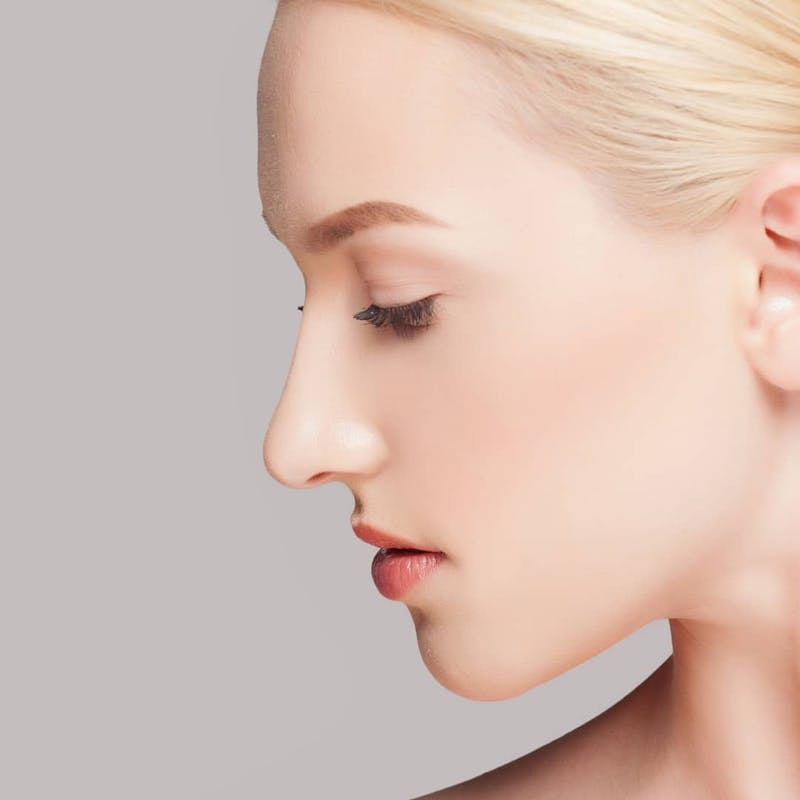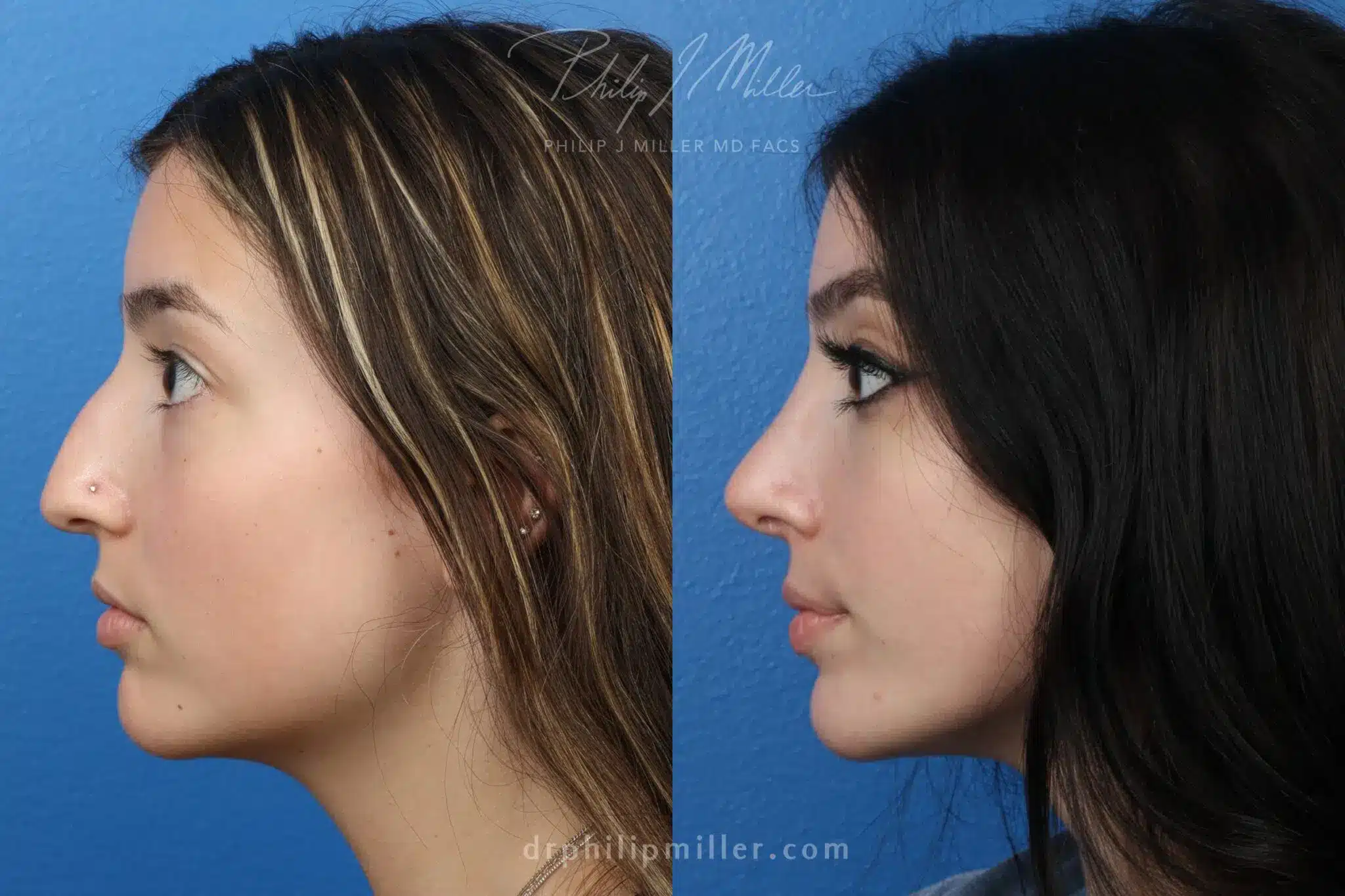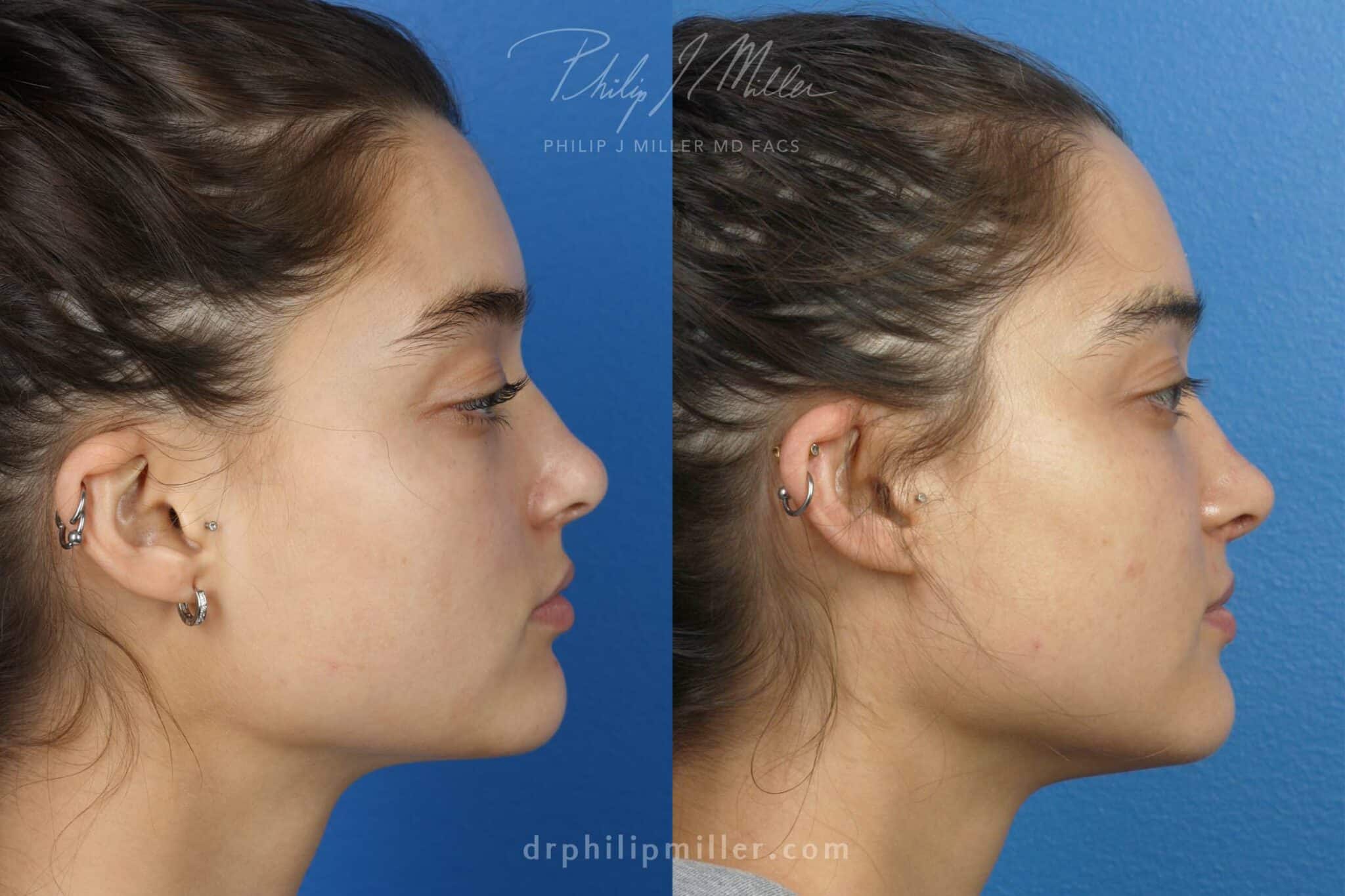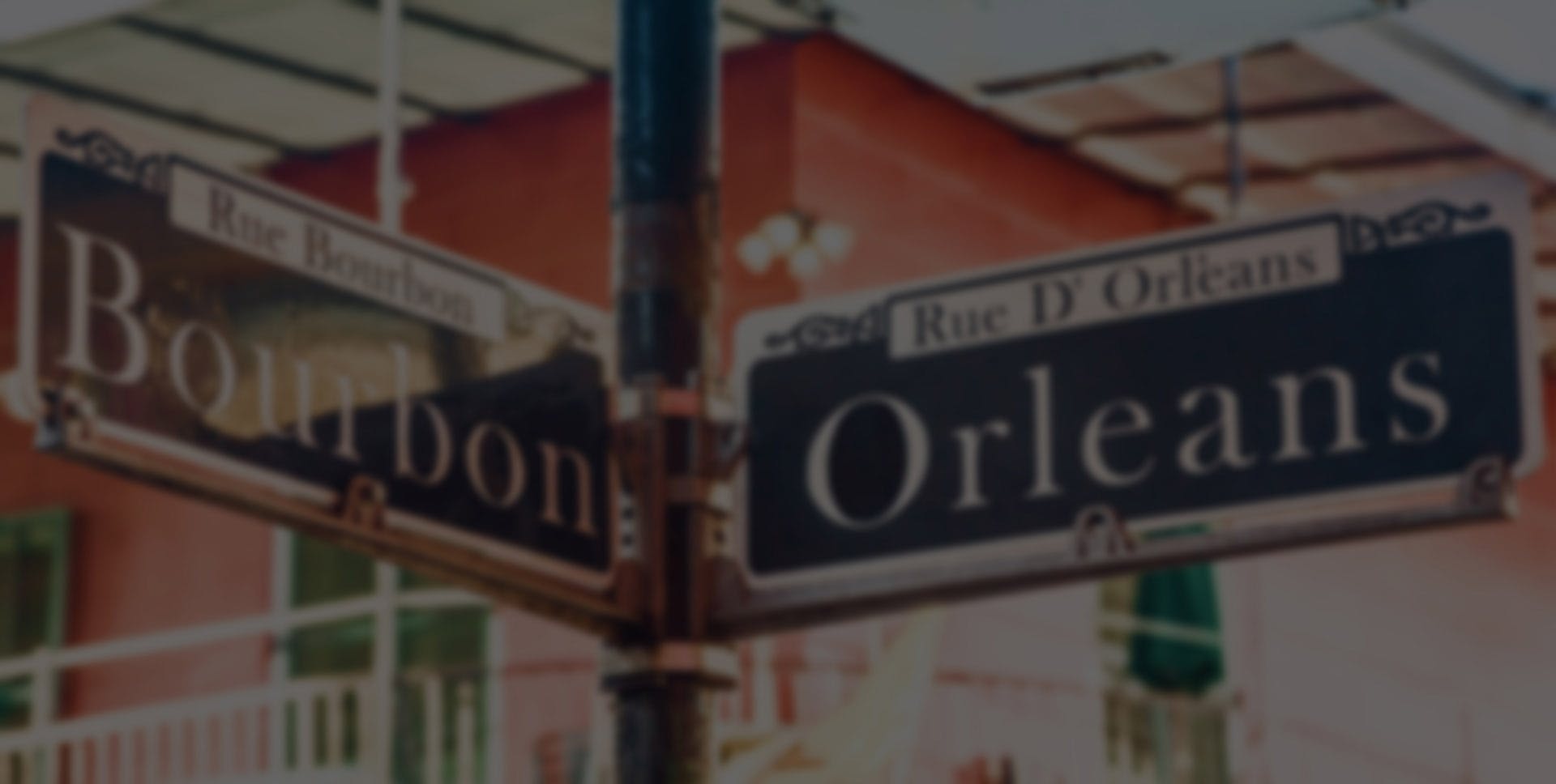
Rhinoplasty Swelling Stages: What to Expect

June 30, 2022
Rhinoplasty is major surgery that will require significant downtime. Although the majority of the healing process will take place within the first few days and weeks, small amounts of swelling may continue to persist for up to one year. Every nose job is different, and every patient will heal at their own pace.
The best way you can ensure a good recovery after a nose job with Dr. Miller is to carefully follow all of his pre- and post-op instructions. As a double-board certified facial plastic surgeon and expert in rhinoplasty, Dr. Miller has performed thousands of rhinoplasty procedures. He has developed a surgical plan to keep swelling to a minimum and produce the best possible results for his patients.
Rhinoplasty recovery will depend on several factors, including the patient’s skin texture and the surgical technique used. Revision procedures tend to have a longer recovery than the initial surgery. No matter what your surgery looks like, swelling is to be expected, and the recovery process will typically follow the same basic structure.
Post-Op Rhinoplasty Care: Week 2 – 3
What to Expect 1 Week Post-Rhinoplasty
You will want to give yourself plenty of time for rest and recovery during the first week after your surgery. Expect significant swelling for the first few days. Your nose will also be tender and you may have difficulty breathing through the nose during this time. You will likely be wearing a splint and nasal dressings for about a week. You may notice bruising around the eyes, cheeks, and lips, and puffiness at the nasal tip. It is also common to notice uneven swelling and asymmetry during this early part of your recovery.
Rhinoplasty recovery week by week
Week 2: At this point, there will be a significant reduction in post-op swelling. Any remaining bruising can be easily concealed with makeup. You will notice as more of the swelling recedes, the new shape of your nose becomes more distinguishable. By the end of the second week, you may return to work if your job is not too strenuous. Intense and demanding activities should be avoided for up to 6 weeks.
Week 3-4: By this time, there should be a dramatic reduction in swelling, and almost all visible signs of surgery should be gone. Your new nose will be more defined and you will start to appreciate your rhinoplasty results. You may also be cleared for moderate exercise. If you had revision rhinoplasty or if you have unusually thick skin, you may still have quite a bit of swelling at this stage of recovery.

Months 2-3: As your nose continues to heal and swelling subsides even more, you will begin to see your full results and feel ready to show off your new nose. Keep in mind that it can take a year for all of the swelling to go down, however. During this time, your bone structure is more stable, enabling you to wear glasses and resume weight-bearing exercises.
Months 3-6: Any numbness or prickling sensations on the skin or inside your nose should begin to resolve at this point of the recovery process.
Months 6-12: Within a year, you will see the final results of your rhinoplasty procedure. With only minimal to no swelling, changes in the nose during this time will be subtle. The repositioned cartilage will have fully conformed to its new shape and the nasal tip should appear more refined.
There are factors that may impact your recovery timeline. These include skin texture and thickness, revision surgery, or extensive nasal reconstruction. During your consultation with Dr. Miller, he’ll be able to clearly discuss what recovery process to expect for your particular rhinoplasty procedure. He’ll also provide you with a set of post-operative care instructions, as well as recommendations for reducing swelling. Dr. Miller and his team will follow you through this entire process, but please be patient to see the final results.
Tips to Reduce Rhinoplasty Swelling 
The best thing you can do as a patient is to follow all the after-care instructions provided by your surgeon. This ensures a smooth recovery free of any complications. Here are some recommendations to help reduce post-operative swelling and speed up your healing process, enabling you to see your full results sooner.
- Avoid sleeping on your side or belly. Sleeping on your back in an elevated position (propped on several pillows) is the best sleeping position. This will minimize fluid buildup, congestion, and discomfort.
- Stay hydrated by drinking lots of fluids. This will help reduce swelling by preventing fluid retention.
- Avoid salty foods which will increase the amount of fluid in your body and in turn result in more swelling due to water retention.
- Eat healthy foods like fruits, vegetables, and proteins that will promote wound healing (e.g., berries, leafy greens, beans, nuts and seeds, and poultry).
- Help the swelling subside by using cool compresses and ice packs around your nose. Do not apply ice directly on the skin. Prevent ice burns by wrapping an ice bag with a towel before application.
- Avoid hot baths and showers while you are still wearing a cast. Steam can worsen swelling and may even cause your cast to fall off.
- Avoid strenuous activities for at least 3-6 weeks, as these can increase blood flow and swelling.
- Avoid smoking which slows down the healing process and increases the risk of post-surgery complications.
- Avoid taking blood-thinning medications that can affect bleeding and impair healing.
Choosing Your Rhinoplasty Surgeon in New York City
For something as invasive as plastic surgery, choose a surgeon who will not only achieve your desired results based on your unique needs and goals, but someone who can provide the support and care you need before, during, and after your procedure.
As a board-certified facial plastic surgeon, Dr. Miller specializes in cosmetic facial procedures that are designed to help patients achieve their aesthetic goals. Dr. Miller creates innovative and comprehensive procedure plans in order to provide natural-looking results and outcomes that are life-changing. Considered one of the country’s leading experts in rhinoplasty and facial rejuvenation, Dr. Miller and his highly acclaimed team are proud to offer patients the highest level of care and customized treatments in Manhattan, New York, and New Orleans, Louisiana.
Dr. Miller’s approach to rhinoplasty encompasses the NatraLook® process that optimizes the patient’s overall experience by ensuring their journey yields the most rewarding results. It is NatraLook’s goal to help patients feel empowered before and after their surgery. During your NatraLook consultation, Dr. Miller evaluates your nose and facial features while listening to your concerns and goals. This process expands the typical plastic surgery experience into a safe, collaborative environment where you can explore your Aesthetic Confidence®.
Contact Dr. Miller to schedule a consultation and learn how his artistic skill and experience can bring balance to your features and help you achieve the best version of yourself.
Focusing exclusively on the face for more than two decades, double-board certified facial plastic surgeon Dr. Philip Miller blends art and science with innovation and skill to provide thousands of patients with impeccable results. He is known for pioneering the NatraLook methodology for rhinoplasty, facelifts, neck lifts, and other cosmetic procedures for the face.

